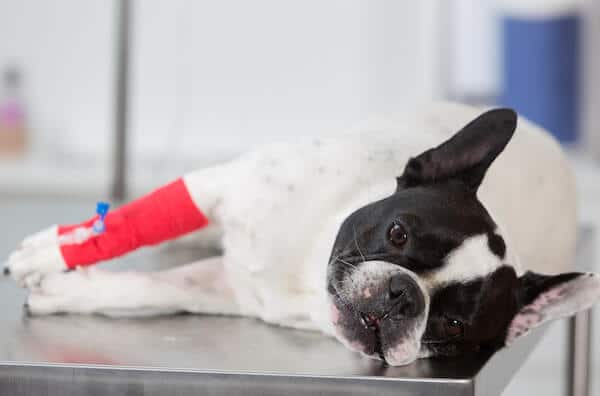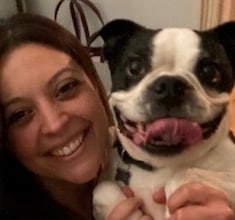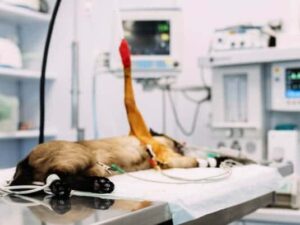
Menu


£355.00 Ex VAT
Confirmed Running
Start: 2nd September 2024
CPD: 20 hours (UK), 20 points (AUS, NZ) over 8 / 10 weeks
Level: Intermediate
This course is aimed at nurses working in general practice
Brachycephalic breeds have seen a huge surge in popularity in recent years, and we are now nursing these patients on a daily basis. These patients come with a whole host of breed specific problems, directly related to their anatomy, and this course aims to comprehensively cover all aspect of nursing brachycephalics in general practice, including anaesthesia, medicine, surgery, critical care and our vitally important role in client education.
Learning objectives
After completion of this week, participants should be able to:
Learning materials this week:
(released on Monday morning for on demand learning until the course ends – approximate timings)
Learning objectives
After completion of this week, participants should be able to:
Learning materials this week:
(released on Monday morning for on demand learning until the course ends – approximate timings)
Learning objectives
After completion of this week, participants should be able to:
Learning materials this week:
(released on Monday morning for on demand learning until the course ends – approximate timings)
Learning objectives
After completion of this week, participants should be able to:
Learning materials this week:
(released on Monday morning for on demand learning until the course ends – approximate timings)
Learning objectives
After completion of this week, participants should be able to:
Learning materials this week:
(released on Monday morning for on demand learning until the course ends – approximate timings)
Learning objectives
After completion of this week, participants should be able to:
Learning materials this week:
(released on Monday morning for on demand learning until the course ends – approximate timings)
Learning objectives
After completion of this week, participants should be able to:
Learning materials this week:
(released on Monday morning for on demand learning until the course ends – approximate timings)
Learning objectives
After completion of this week, participants should be able to:
Learning materials this week:
(released on Monday morning for on demand learning until the course ends – approximate timings)
Please note: In weeks 6 and 7 you will not be taught how to conduct any of the surgical techniques, as this is outside the remit of veterinary nursing in general practice
This course will be fully tutored by Lydia Christie Woodend Smith, Katie Gray, Lisa Angell, Alison Young and Sian Woodham-Davies and will consist of 20 hours of CPD given in various formats, including tutorials, tasks, case studies, forum discussions and quizzes. There will be two short written assignments for the course, one based on ECC and the other on an anaesthesia topic. This course is tutored for 8 weeks, followed by a two week extension of untutored ‘catch up’ time, before the course officially ends.
All delegates will then have unlimited lifetime access to the learning material for future reference

Lydia Christie Woodend Smith RVN
Soft Tissue Surgery Specialist Nurse, University of Cambridge
Lydia qualified as a veterinary nurse in 2014, having trained in a busy, independent, first opinion practice. She subsequently took a position working in the theatre team of a specialist referral hospital, where she gained further experience in the management of surgical patients. Lydia later returned to general practice as a head nurse – during this time she developed a keen interest in the welfare of companion animals, specifically of brachycephalic breeds, and the importance of client education to promote this. In 2019 Lydia became the Soft Tissue Specialist nurse and BOAS assessor for the Queen’s Veterinary School Hospital, Cambridge. Through this role Lydia assesses brachycephalic patients for BOAS, co-ordinates the clinical research performed and runs the Cambridge BOAS Research Group social media pages which have been specifically created to educate vets, nurses, owners and breeders about brachycephaly and BOAS. Lydia also works very closely with the specialist surgeons, nursing teams, veterinary students and owners to ensure every patient undergoing BOAS treatment has the smoothest possible transition between admission and discharge from the hospital.

Katy Gray PGCert VE, DipAVN, RVN, FHEA, MNCS
The Ralph Veterinary Referral Hospital
After registering as an RVN in 2012, Katie worked as both a surgery nurse and then an emergency and critical care nurse at the Royal Veterinary College referral hospital, where she spent 6 years as a senior ECC nurse. During her time there, she completed the Advanced Nursing Diploma, a Post Graduate Certificate in Veterinary Education, and the Blue Cross Bereavement Certificate. Katie regularly lectures for VNs, both in the UK and internationally; and has written a few articles, including her own research into sepsis recognition. Since 2019, Katie has been working towards the Advanced Diploma in Psychotherapeutic Counselling, and in Spring 2022 started working in a supportive role at The Ralph Veterinary Referral Hospital. Outside of work Katie volunteers for StreetVet, and she is on the Veterinary Critical Care Nurse Committee which is part of the British Association of Critical Care Nurses.

Lisa Angell VTS (anaesthesia and analgesia), PgCert Vet Ed, FHEA, RVN
Head Anaesthesia Nurse, Royal Veterinary College
Lisa qualified as a veterinary nurse in 2007 and joined the Queen Mother Hospital for Animals at the Royal Veterinary College as a dedicated anaesthesia nurse in January 2010 following 7 years in general practice. Lisa became head anaesthesia nurse in 2013. In 2012, Lisa became board certified as a Veterinary Technician Specialist in anaesthesia and analgesia, and in 2020, Lisa graduated with a post graduate certificate in Veterinary Education. Lisa enjoys all aspects of anaesthesia but has a particular interest in locoregional analgesia techniques.

Alison Young DipAVN (Surgical), VTS (Surgery) RVN
Head Surgery Nurse, Royal Veterinary College
Alison qualified as a veterinary nurse whilst working at a small practice in Hertfordshire. She joined the Queen Mother Hospital in 2001 as a general surgery nurse and worked rotating through all areas of the hospital. In 2003 she joined the theatre nursing team and studied for the Diploma in Advanced Veterinary Nursing (Surgical) where she gained the highest marks for that year. Alison gained the VTS (Surgery) in 2015 and is Head Theatre Nurse at the Royal Veterinary College

Sian Woodham-Davies RVN
Ophthalmology Nurse, Royal Veterinary College
Sian qualified as a veterinary nurse in 2012 and after having spent some time in small practices she joined the Queen Mother Hospital for Animals in 2014. Sian is working in the Ophthalmology department and has a passion for nursing these cases. Sian is currently working towards her VTS in Ophthalmology and enjoys sharing her knowledge with fellow veterinary nurses as she feels it is a subject that is not widely covered in the nursing curriculum.
This online course is worth 20 hours of CPD.
A certificate will be available from the ‘My Courses’ section, for you to download and print, once you have completed the course. A permanent record of your total CPD hours will also be recorded in your account section.
The Australian Veterinary Nurse and Technician (AVNAT) Regulatory Council has allocated 20 AVNAT CPD points to this continuing education activity.
This course is also recognised by the New Zealand Veterinary Nursing Association (NZVNA) as providing 20 CPD points.

Upon purchase you will be registered to attend the course, for 8 weeks from the start date. The course will consist of various interactive tasks and lessons, including quizzes, case studies, forum discussions and further reading material.
The course is fully tutored, with new material will be provided each Monday morning, but the onus will be on the individual delegate to ensure that all tasks are fully complete. The certificate will only be issued at the end of the course when all tasks have been accomplished. Fewer CPD hours will be awarded at the the end of the course if there are unfinished tasks or there has been no contribution to the discussion forum, for example
The course is fully flexible, and there are no weekly ‘deadlines’ – the lessons and tasks may be completed whenever is convenient for each delegate, and any live lessons with be recorded and made available later that same day. Furthermore, all the course material will be available for a further 2 weeks, to allow delegates the opportunity to catch up on missed lessons and tasks, or to take the opportunity to delve further into the suggested reading texts. Please note however, that the course will not be tutored by the speaker during these final two weeks, but the time spent will count towards your CPD hours
After 10 weeks, the course will be complete and there will be no further opportunity to gain the certificate or CPD hours, however, you will have unlimited lifetime access to the tutorials, further reading and quizzes for future reference. If you make any personal notes during the course using the ‘take notes’ app, these will be saved, along with your certificate and CPD record for permanent access in ‘My CPD’
This course has been listed as ‘Intermediate’ level
All of our courses are aimed at veterinary nurses in general practice, but everyone who works in the veterinary profession is very welcome to attend, whether you are a clinical receptionist, veterinary surgeon, student nurse or have been a qualified nurse for over 20 years!
The courses are not formally assessed for skill level, so the following CPD levels are just a rough guide to help you decide if a course may be more or less suitable:
Introduction
– maybe most suitable for qualified nurses in general practice approaching a new topic or looking for a refresher course
Intermediate
– maybe most suitable for qualified nurses in general practice along with referral / specialist nurses looking for a refresher course
Advanced
– maybe most suitable for referral / specialist nurses and highly experienced qualified nurses in general practice
You will earn 355 Pawprint Points (£35.50 website credit) when you purchase this course
Our loyalty scheme rewards you with 10% in website credit to spend on future courses. Choose pay with Pawprint Points during checkout.
Please ask your practice manager or accounts department to visit the website, register an account in their own name, and during checkout, complete the ‘delegate name’ and ‘delegate email’ sections with your personal details. We will then register you a personal account on your behalf, and transfer the course booking over to your new personal account. We will of course email you all the information you need to access this new account and your CPD course.
If you need an invoice and no other payment method is available to you, then please email [email protected] with all the following information:
Please note the following:





Excel CPD specialises in providing online CPD for veterinary nurses and technicians all over the globe. Our courses are also fully approved by AVNAT for our nursing colleagues in Australia and New Zealand.
©2009-2024 Excel CPD | Terms and Conditions | Privacy Policy
Isabelle Anderson –
Very informative and useful course. Enjoyed the style of tutorials, forums and quizes for different learning types.
Rated: Introduction level
(Qualified RVN in general practice >5 years – UK)
Alix Robertson –
very good material, lectures where easy to follow and had lots of information
Rated: Introduction level
(Qualified RVN in general practice <5 years - UK)